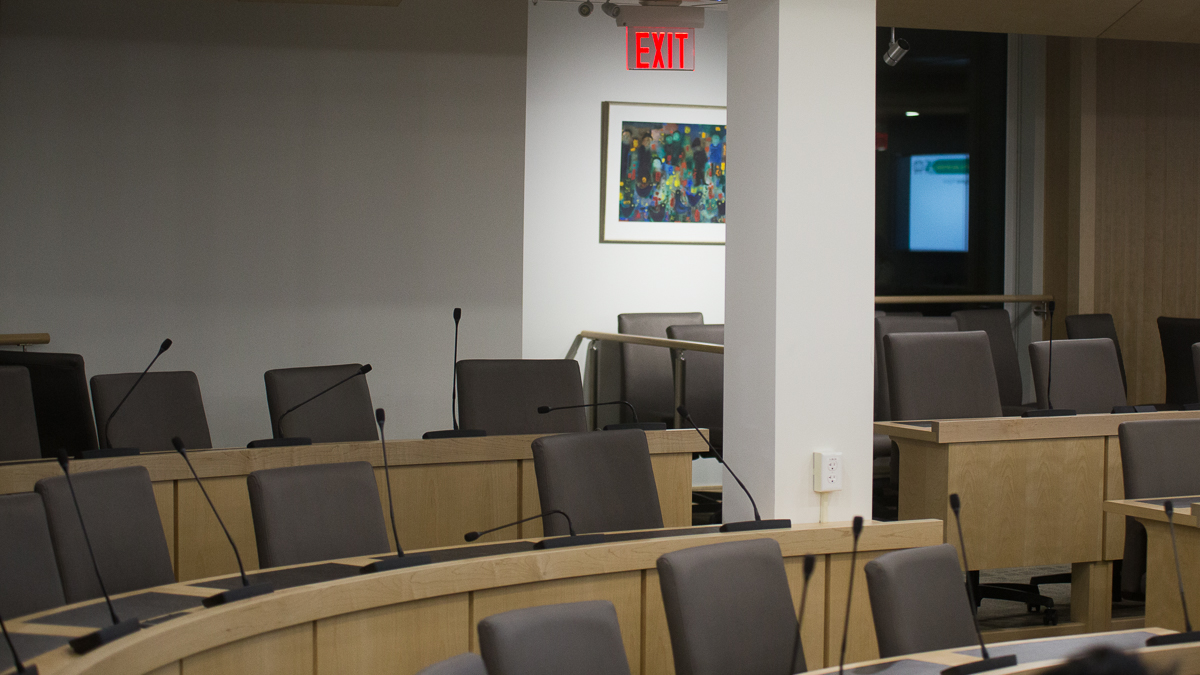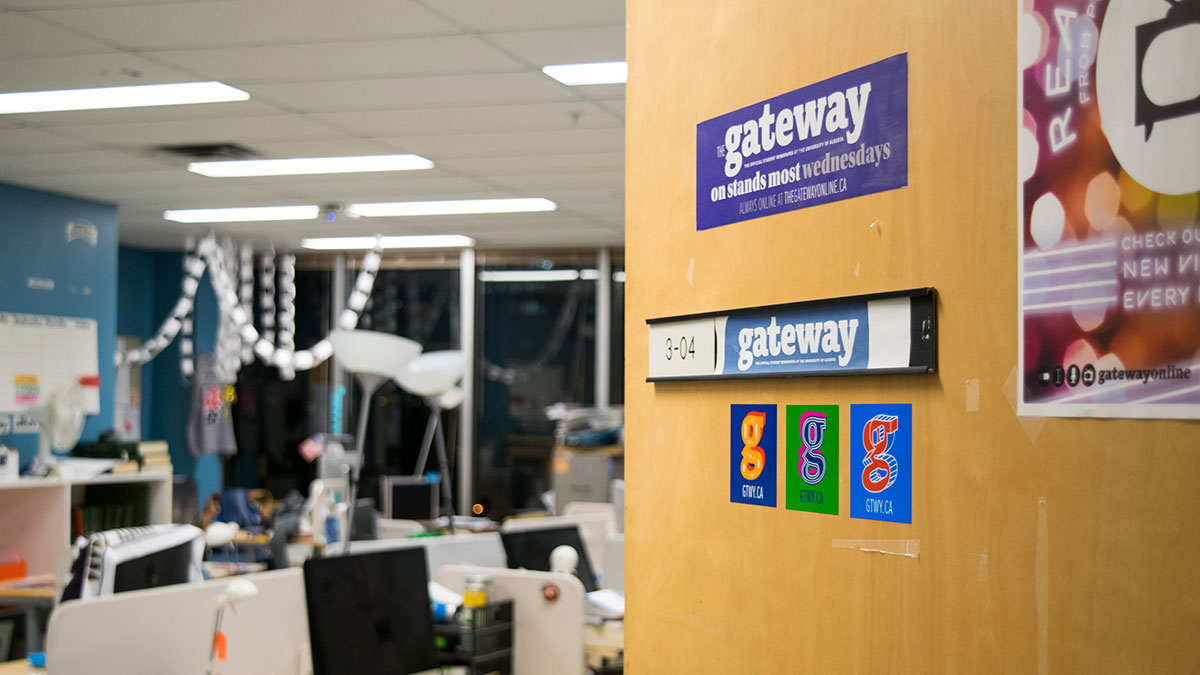 Rosty Soroka
Rosty SorokaThis past year has been one of financial obscurity and ineffective Students’ Council discussions that have gone around in circles. Last year, I critiqued council on their lack of transparency, especially around the use of a secret ballot, but little has changed since then.
Considering this student-elected body is responsible for holding an executive team in charge of an $11 million annual budget accountable, this isn’t acceptable. However, an entirely new team of councillors have taken office, and they have the opportunity to deliver on council’s commitment to transparency and regain the trust of students — issues that Students’ Council has continually struggled with.
This year, one of the transparency topics I’d like to see councillors address is the use of Non-Disclosure Agreements (NDAs).
Various students’ unions across the country use NDAs, also known as confidentiality agreements. They outline what kind of information is confidential, who it can — or in this case, can’t — be shared with, and usually include a time frame for the requirement of confidentiality.
The use of NDAs in the University of Alberta’s Students’ Council is understandable. But, the extent of their use is disappointing to say the least.
At the U of A, a councillor must sign an NDA in order to be a part of in-camera discussions. These are discussions that the public cannot listen to. Hence, every councillor currently serving on Students’ Council will have to sign one.
According to the Students’ Council Confidentiality Agreement, the following items are considered confidential information: all data, materials, specifications, manuals, council proceedings, business plans, marketing plans, financial information, personnel information, investigation statements, and other information that is not already public knowledge, disclosed, or submitted, orally, in writing, or by any other media, to the councillor.
The confidentiality agreement does not specify the timeframe in which the items are to remain confidential. For example, this could be interpreted as the duration of a councillor’s term, specified years after office, or indefinitely.
In an acquired document with legal opinion on the agreement, it was made clear that despite not specifying, the confidentiality agreement does not expire. The consulted lawyers added that in their interpretation, how sensitive the information is is not a factor in its confidentiality.
Why does all this matter?
Having a confidentiality agreement in itself is not a barrier to transparency. Confidentiality is an important part of keeping personnel safe. However, there seems to be a growing number of instances where Students’ Council exploits the NDA as a defence to keep decisions and discussions private.
Last year, council went in-camera to elect an interim Board of Governors representative. A decision I thought lacked transparency. Nothing similar to that situation has happened since. But, it’s important to remember that council hasn’t had to make a decision like it since, either.
Nowadays, the decision to go in-camera feels shallow, with little justification as to why conversations need to be confidential. On the November 29, December 13, and January 10 council meetings, in-camera discussions were planned to “direct the Executive Committee to organize watch parties for the 2022 World Cup.” That’s three council meetings in a row before the motion was ultimately withdrawn by unanimous decision on January 10. Besides feeling like a waste of time, the decision to have the discussion in-camera feels arbitrary. But, because of the broad definition of “confidential information,” the argument could be made that this discussion did fall under confidentiality.
Interestingly, in the NDA, confidential information includes “financial information.” To see if this is the norm, I contacted students’ unions from across the country. When making a comparison with confidentiality agreements from the University of Calgary, University of Toronto, and McGill University — the U of A is the only one that includes such a clause.
To specify “financial information” that isn’t released to the public is considered confidential is especially problematic when reflecting on council’s consistent lack of transparency.
The lack of student consultation prior to financial spending has been a hot topic this year. Having such a broad definition for what the public can and can’t see is worrying.
This is especially true considering Break the Record (BTR), which caused concern amongst students. BTR was a dodgeball event that cost approximately $145,000, with the UASU planning to spend $10,000 but actually spending $49,309.
With “financial information” included in the definition of confidentiality, it’s not hard to imagine that in the future, the planning of a withdrawal for a large sum of money could potentially slip by the public’s eye.
Even without in-camera sessions, Students’ Council consistently passes motions to release large amounts of money toward various projects. For example, on May 17, council approved a $322,563 funding request from the Sustainability and Capital Fund (SCF) to go towards “Summer 2022 Main Floor, Atrium and Patio Improvements” for the Students’ Union Building (SUB).
On August 9, council approved another $51,375 to be released from the SCF to go towards “initial design of a potential north entrance, including associated lounges, and of the main circulation corridors on the main floor; and Schematic design work for a renovation to the Food Court area.”
While these funding requests aren’t inherently in poor taste, the manner in which they passed through council leaves a sour taste in my mouth. Namely, at the end of council meetings, and lacking the discussion that such large sums of money deserve.
The use of NDAs and other confidentiality agreements are meant to be protective, and leaned on as a worst-case scenario. However, the frivolous use of in-camera sessions, large amounts of money being released by council, and council’s historic lack of transparency does not inspire much confidence.
How long will it take until a decision regarding students’ money is entirely discussed in-camera? Maybe it’s already happened — we’ll never know.
While in-camera, Students’ Council is not meant to conduct votes, finalizing decisions that are meant to be made public. But despite previous criticism, Students’ Council still does not make voting records public. This makes their practices hard to follow, and ultimately inaccessible to the general public.
Student engagement with student governance is already at an alarmingly low level. Engagement has been discussed at council multiple times just this year. The 2023 U of A Students’ Union (UASU) election turnout was 19.3 per cent. This is just a 0.71 per cent increase from last year — the lowest in the past decade. Why make student governance even harder to access for the everyday student?
In a comment provided to The Gateway, Christian Fotang, president of the UASU, said that Students’ Council uses NDAs to keep “sensitive information private.”
“They help create a safe space where council members can have open and honest conversations. NDAs are used when discussing personal matters, legal and financial duties, or other topics that require confidentiality,” he said. “The council is committed to finding a balance between confidentiality and transparency, ensuring important decisions and updates are shared openly while respecting privacy concerns. Of course, voting cannot take place in-camera and is always known to the student body.”
Having NDAs isn’t inherently bad. However, council needs to prove their commitment to the “open, transparent governance” that they promise to their student constituents. Since July 12, council has begun to report the number of votes for, against, and abstaining motions. Granted, this is a small step in the right direction. But, the gap between councillors’ knowledge, and information received by their constituents is still exceedingly large. As well, many councillors have expressed concerns that there is a disconnect between them and the executives. In the 2022-23 year, six councillors have resigned, the highest in nineteen years.
With this year’s council terms just beginning, I hope to see policy changes in council to reflect greater consultation with constituents, meaningful decisions to go in-camera, and above all — transparency to the public.




